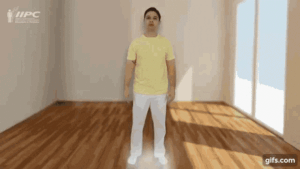How is your multidimensional critical sense? Do you believeall the information you receive?

How to maintain a critical sense in relation to recent and archaic information we receive?
The Principle of Disbelief is a fundamental assumptionof Conscientiology and is a counterpoint to beliefs about reality and the very information we have about ourselves.
We are currently subjected to a lot of information on a daily basis. According to studies¹, we spent about 12 hours reading and listening to approximately 100,000 words every day. Added to these new inputs are beliefs, dogmas, doctrines and mysticisms that have existed since the Bronze Age, but which are still active in intra and extraphysical societies, without being subjected to proof. We are also impacted by information that reinforces materialism and the belief that this life is limited to the physical dimension.
It is, therefore, essential that the self-researcher has principles that make him think critically and that instigates him to question, rationality and critical sense to sharpen his discernment and be more capable of separating evolutionary information from mistakes or manipulations. The subspecialty of Conscientiology that studies the Principle of Disbelief is Disbeliefology.
Definitions related to the Principle of Disbelief
 To present Disbeliefology we need to start with definitions. When researching the meanings – the different definitions of a word – we realized that “belief” has many definitions, many of them similar but different. Among these definitions is the following, which we will use in this article:
To present Disbeliefology we need to start with definitions. When researching the meanings – the different definitions of a word – we realized that “belief” has many definitions, many of them similar but different. Among these definitions is the following, which we will use in this article:
Conviction about the truth of some statement or the reality of some being, thing or phenomenon, especially when there is no conclusive proof or rational confirmation of what one believes: Belief in the supernatural. Has an unshakable belief in fortune tellers
Common sense is that belief and conviction are synonymous. Popularly we use the word “belief” to attest to an understanding of reality. In this sense, belief is an automatic mechanism that gives meaning to sensory perceptions and one of the most basic functions of the human mind. It is an instrument for consolidating previous experiences and creating new individual predictions, true or not, about how the Universe works.
However, belief is just an attempt to understand the world, based on previous information, whether ours or other people’s. In order to consolidate itself as knowledge, it needs to be verifiable
The author Sam Harris, in The Death of Faith, quoted by Marcelo da Luz in Where does Religion ends³, gives an example of verification of something that most students who have gone through basic education have: the information that the water molecule is composed of two hydrogen atoms and one oxygen.
Few of these students, however, will have the means to experience this statement. They will spend their lives believing that H2O is a true representation of water. However, for some more interested people, it will always be possible to find ways to carry out the laboratory experiment of electrolysis and thus verify the molecular reality of water. Thus, the information leaves the status of belief to become a verifiable fact, that is knowledge through experience.
It is also important to differentiate Disbeliefology from Disbelief. Set to “1. Lack of belief, state of one who does not believe in someone or something, atheism”² disbelief is, therefore, the simple antagonism of belief. And it is different from Disbeliefology in that it does not replace belief with a more sophisticated mechanism of knowledge.
What is the Principle of Disbelief? Critical Sense and Conscientiology
In the verbetPrinciple of Disbelief, this conscientiological premise, proposed byWaldo Vieira (April 1932 – June 2013) is defined as follows in the Encyclopedia of Conscientiology:
The principle of disbelief is the fundamental and irreplaceable proposition of Conscientiology’s approach to the realities, in general, of the Cosmos, in any dimension, refusing the researcher and refuting conscience of any concept ina priori, dogmatic way, without practical demonstration or delayed reflection, confrontation of causation, logic and the fullness of personal rationalization.
It can be said, in a nutshell, that the Principle of Disbelief suggests the replacement of belief – uncritical – by personal experiments, an evolutionarily more intelligent way of understanding the manifestation itself and the Universe. The Principle of Disbelief is written in all Conscientiology books, buildings and classrooms, and is constantly reinforced in the classes of the various courses on neoscience and works on Conscientiology. The videobelow is presented briefly.

Principle of Disbelief (PD) and the Consciential Paradigm
The Consciential Paradigm is the fundamental proposition to answer countless questions and explain several phenomena that have been ignored or excluded from physicalist science for about 2 centuries, and also raise many other important questions for the development of science.
Through this new paradigm, interested consciousness has a way of studying themselves.It acquires an ability to scientifically analyze themselves, admitting, for example, multiple dimensions. In self-research, consciousness (you and all of us) becomes, simultaneously, the object of study, the subject and the research instrument themselves.In the method of self-research (research of oneself) the researcher is the very object of his investigations.
The Consciential Paradigm proposes the expansion of scientific thought, offering an integral vision of the Universe and self-manifestation. From this new point of view, it is possible to leave the “dermatology of consciousness”, that is the superficial study, material, which represents the “skin” of self-discernment, to enter deeply into the dynamics of the personal microuniverse.
When studying the Consciential Paradigm, the Principle of Disbeliefresearcher can reflect on how to replace belief with self-experience in the study of multiple dimensions, past lives, out-of-body experience, among other extraphysical phenomena (known as paranormal phenomena), without mystical or materialistic approach. Itstudiestheconsciousness without mediators.
These are the premises of the Consciential Paradigm and its relationship to the Principle of Disbelief:
1. Holosomatics and PD: It admits the existence of the holosoma, that is, the set of bodies or vehicles of manifestationof consciousness formed by the soma or physical body (human body), energosoma (energy body also known as holochakra), psychosoma (popularly known as the astral body) and mentalsoma (body of discernment). By studying the holosomatic manifestation of intraphysical consciousness, the researcher has the opportunity, through their vehicles of manifestation, to experience different dimensions and their interrelationships.
Intraphysical life itself is already a multidimensional experiment
2. Bioenergetics and PD: Assumes the existence and lucid application of bioenergies through the energosoma (energosoma: energetic body formed by the set of chakras). Many people experience energetic perceptions and make decisions based on them, consciously or not. They are an important source of experience because they bring information that is often more significant than what intraphysical reality can convey.
Energies show inconsistencies
3. Multidimensionality and PD: The critical sense is multidimensional. Consciousness manifests itself in multiple dimensions and each vehicle manifests itself preponderantly in one dimension. This self-proof of multidimensionality through the phenomenon of Projection of Consciousness (astral projection is one of its popular names), for example, is an irreplaceable proof of the existence of consciousness beyond matter, being a non-mystical, but scientific approach through Projectiology science.
No form of knowledge about Conscious Projection is as impactful as critical self-checking
4. Seriality and PD: It supports the principle that consciousness is multi-existential and multi-millennial. By admitting seriality, intraphysical consciousness (conscin) may come across the etiologies, that is, the origins of beliefs about themselves that it still carries.
A rational examination, through Conscientiology techniques, can help to determine whether these beliefs may actually be true or are self-delusions about the manifestation itself. Another important approach is to study the lines of knowledge that you have passed through in past lives.
Strong experiences in world religions or militarism, for example, can create innate tendencies towards dogma and irrationality. It is up to the interested self-researcher to investigate and overcome these limited mechanisms of transmitting knowledge. Mysticism is, in addition to religion, one of the modes of production of ancient beliefs and superstitions.
Disbeliefology can help overcome beliefs acquired in past lives.
5. Cosmoethics and PD: The consciential paradigm has moral philosophy as cosmoethics or cosmic morals – a broader principle than human morals. To qualify the Principle of Disbelief with Cosmoethics, reflections are suggested: What is my level of responsibility when talking about information that I have no experience with or self-reflection about it? When I dialogue with other consciousness, do I look for an anti-dogmatic approach or do I still find myself trying to convince others?
Do I appropriately share my experiments by encouraging other consciousnesses to perform the same feats and make their own discoveries about themselves and the Universe?
6. Universalism and PD: It is the set of ideas derived from the universality of the basic laws of Nature and the Universe. The state-of-the-art relative truths (verpons) studied by Conscientiology are open to experimentation by all, and not limited to sectarian initiates or knowledge holders. The experience of self-research does not require mediators, priests or initiations to understand multidimensional realities.
Self-experiments are available to all researchers interested in their evolutionary development.
7. Self-experimentation and PD: Self-knowledge can be a process in Conscientiology. Self-knowledge is qualified with self-scientificity. Here, the importance of the principle of disbelief applied even to oneself is highlighted. The researchers should reflect on the possibility of being influenced by their personal beliefs during their self-research and conducting to the conclusions.
“Disbeliefology ends up the monopoly of hetero power passing to self-power.” (Vieira, 2015)
Cosmoethical Optimistic Skeptic – The disbelief’s stance
Disbeliefology is a conscientiological specialty that promotes Skepticism used in an evolutionary way. It usesquestioning as a process of self-knowledge. By questioning the reality as it is, the Disbeliefologist has the opportunity to better understand the evolutionary mechanisms, promoting intimate well-being for himself and for others. It is different, therefore, from nihilistic skeptical attitudes, which only deny realities, but do not seek interassistential counterpoints.
Based on our own experiences and understanding, we were able to qualify ourselves with critical thinking and have the moral authority to do Claritask – clarification task – and show our example. Therefore, the recommended posture is that of the cosmoethical optimistic skeptic, an interassistantial critical thinker.
Skepticism. From the perspective of Experimentology, cosmoethical optimistic skepticism is the best state of consciousness to make the technical or paratechnological research approach. (Vieira, 2003 p. 120)
Critical thinking can be an important propulsion of evolution. Reflect:
Do you admit the use of the Principle of Disbelief in your daily life? Can you see the evolutionary adventsof questioning?
Learn more about the Principle of Disbelief and the IIPC
Do you want to know more about the counterpoints of Conscientiology and Disbeliefology in relation to materialistic science, religions,media and ideologies?
Subscribe your email and receive more content about the Principle of Disbelief!
You can also check out the CEAEC Blog, conscientiology campus in Foz do Iguaçu.



